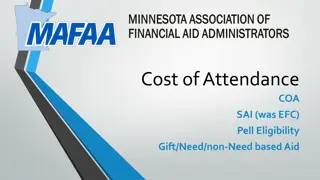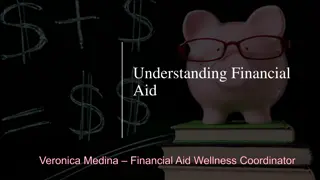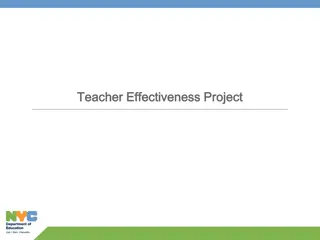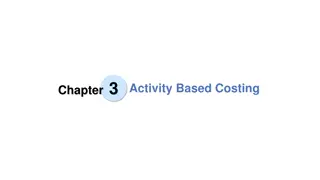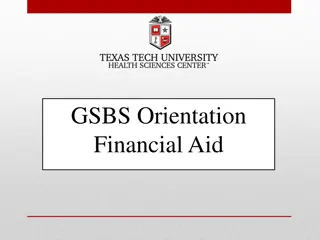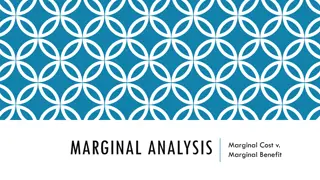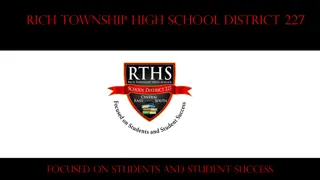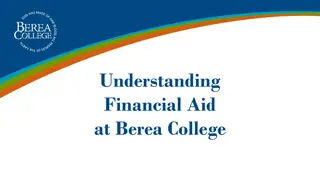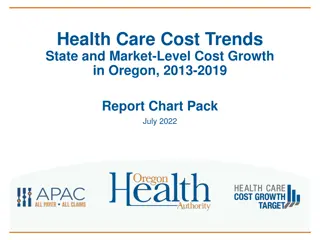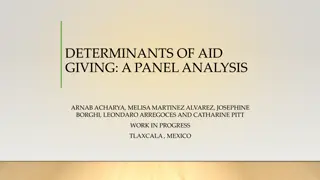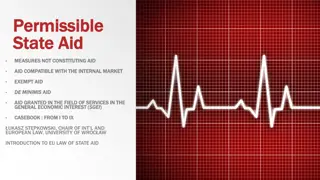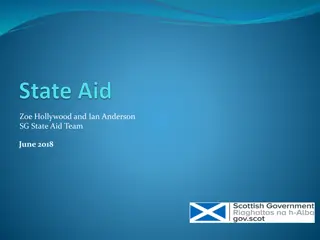Teacher's Aid - Reach, Effect, & Cost: Making Choices in a Health Department
Understanding effective intervention strategies, cost-effectiveness, and impact on reducing obesity is crucial for health departments. This case study involves comparing strategies, identifying cost-effective interventions, and strategizing involvement for policy development, ultimately aiming to improve nutrition and physical activity environments for better population health outcomes.
Download Presentation

Please find below an Image/Link to download the presentation.
The content on the website is provided AS IS for your information and personal use only. It may not be sold, licensed, or shared on other websites without obtaining consent from the author. Download presentation by click this link. If you encounter any issues during the download, it is possible that the publisher has removed the file from their server.
E N D
Presentation Transcript
Teachers Aid An Overview of Reach, Effect, & Cost Making CHOICES in a Health Department: CHOICES Case Study #2 (Advanced)
Teachers Aid Time allocated Activities Activity Introduction to the Case with Overview Slides 25 minutes Case Pair Activity (2 students per group) 45 minutes Class Testimony sharing and Wrap up 20 minutes
Teachers Aid Learning Objectives Compare effective intervention strategies and identify those that have the largest impact on reducing obesity o Compare effective intervention strategies and identify those that are most cost-effective at reducing obesity o Think strategically about what organizations and individuals need to be involved in developing policy and programmatic interventions to reduce obesity o
Teachers Aid Optimal Interventions Policies and programs improving nutrition and physical activity environments Improve population health and reduce disparities Best results for dollars invested Gortmaker et al., Health Aff, 2015
Teachers Aid Cost-Effectiveness Analysis compares the costs and outcomes of: vs. vs. vs. vs. One policy or program intervention with no intervention Two or more policy or program interventions OR OR
Teachers Aid Reach, Effect, & Cost Cost Reach Effect Implementation costs of program/policy and healthcare cost savings Who will benefit? What is effect of the policy/program on health? Focus on cost-effectiveness implementation of interventions to improve nutrition & physical activity environments Dietz & Gortmaker, Am J Prev Med, 2016
Teachers Aid What is Reach? The number of people who are impacted by an intervention o
Teachers Aid Reach Total State/City Population Relevant Population Eligible Population Intent to Treat Population Reach Who will benefit? Benefitting Population
Teachers Aid What is Effect? The impact of an intervention on health by using estimates from literature o
Teachers Aid Effect Anthropometric change: IDEAL Policy/ program/ intervention BMI, BMI z-score, weight change Evidence links intervention directly to BMI Effect Defined activities o What is being impacted? How strong is the evidence? Potential to be implemented using a process or system o Applicability within a real-world setting o Prioritize effect estimates from strong study designs o
Teachers Aid What is Cost? The activities and resources that are necessary to achieve the expected health outcome o
Teachers Aid Cost Costs required to implement intervention Modified societal perspective on costs o o Cost What are the implementation costs of program/policy and what are the health care cost savings? o Determine activities Who does what to whom, when?
Teachers Aid More Informed Decision-Making The components of reach, effect, and cost can Help you to understand what may or may not be feasible to implement o o Provide information to inform prioritization



